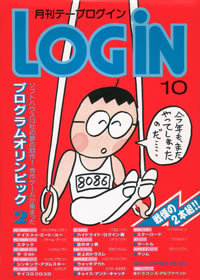Overview
Dragon Slayer is an action RPG developed by Nihon Falcom and designed by Yoshio Kiya. The title was originally released on September 10, 1984 for the NEC PC-88 computer and became a big success in Japan at the time. Dragon Slayer began the Dragon Slayer series, a banner which encompasses a number of popular Falcom titles such as Xanadu, Legacy of the Wizard, Sorcerian, and The Legend of Heroes.
Various ports of Dragon Slayer were eventually released for different computers platforms including an MSX port created by Keiji Ueoka at Square Soft in 1985. A port for the Game Boy was also developed by Epoch in 1990. A spin-off called Dragon Slayer Gaiden was later released in 1992 for the Game Boy and a remake of Dragon Slayer was also included in the Falcom Classics collection for the Sega Saturn in 1997.
Gameplay
Dragon Slayer is regarded as one of the progenitors of the action RPG genre in Japan. In contrast to earlier turn-based titles, Dragon Slayer was a dungeon crawl RPG that was entirely real-time, with action-oriented combat where the player bumps into enemies to attack them. In some ways, the foundations of Dragon Slayer's action RPG gameplay can already be seen in Yoshio Kiya's previous 1983 game Panorama Toh. Dragon Slayer featured an in-game map to help with the dungeon-crawling, required item management due to the inventory being limited to one item at a time, and introduced the use of item-based puzzles.
Trivia
 October 1985 issue of Login.
October 1985 issue of Login.- During Dragon Slayer's development the game was initially called "Dragon Zone" [1].
- According to Kiya himself, Dragon Slayer is directly based on an earlier action RPG released for the Apple II in 1982 called The Caverns of Freitag. Kiya often visited Falcom's old Apple retail store call Computer Land Tachikawa in the early 80s where he first encountered Caverns of Freitag in the shop's large collection of imported software [2][3].
- Yoshio Kiya and Tadanobu Inoue both actually developed their own action RPGs independently at Falcom in 1984 with the idea that the best of the two games would be selected for publication. Ultimately Kiya's PC-88 game was released as Dragon Slayer while Tadanobu Inoue's game on the FM-7 was later made available in the pages of the October 1985 issue of Login Magazine under the name "Inoue's Dragon Slayer" (井上のドラスレ) [4][5][6].
- One of the enemies in Dragon Slayer is the disembodied head of Tamori, a famous Japanese comedian that also stared in a number of commercials for the FM-7 computer around the time of the game's release.
References
- Information from 2017's "Listen to the Legendary Game Creators" Panel with Yoshio Kiya and Tomoo Yamane (VGDensetsu).
- Tweet by Yoshio Kiya about Dragon Slayer being based on The Caverns of Freitag (@nekoaisle, 2013).
- Kiya Explaining How He was Exposed to Caverns of Freitag (@nekoaisle, 2020).
- Inoue's Dragon Slayer (The Falcom Museum).
- Complete Playthrough of Inoue's Dragon Slayer (Samuel Messner, 2020).
- Inoue's Dragon Slayer (Oh! FM-7).
Log in to comment